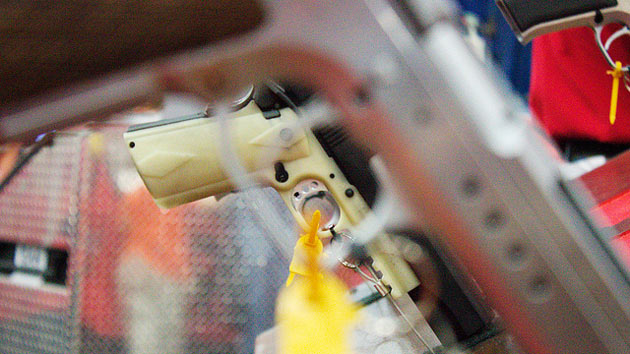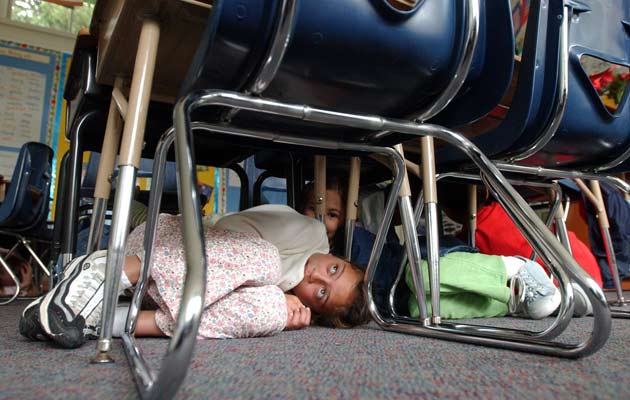
A new study based on a survey of more than 15,000 American high school students found that victims of bullying are nearly twice as likely to carry guns and other weapons at school. An estimated 200,000 victims of bullying bring weapons to school over the course of a month, according to the authors’ analysis of data from the Centers for Disease Control’s 2011 Youth Risk Surveillance System Survey. That’s a substantial portion of the estimated 750,000 high school students who bring weapons to school every month.
The study, presented yesterday at the annual meeting of the Pediatric Academic Societies, found that 20 percent of participating students reported being victims of bullying, and that those teens were substantially more likely to carry weapons if they had experienced one or more “risk factors.” These included feeling unsafe at school, having property stolen or damaged, having been in a fight in the past year, or having been threatened or injured by a weapon. Among bullying victims experiencing all four of those factors, 72 percent had brought a weapon to school in the past month and 63 percent had carried a gun. Those victims were, according to the study’s authors, nearly 50 times more likely to carry a weapon in school as students who weren’t bullied.
For years, anti-bullying groups have drawn a connection between bullying and school shootings. The Department of Health and Human Services’s Stopbullying.gov website reports that the perpetrators of 12 of 15 school shootings in the 1990s had a history of being bullied. Witnesses of a 2013 shooting at Sparks Middle School in Nevada recall the 12-year-old shooter telling a group of students, “You guys ruined my life, so I’m going to ruin yours.”
However, focusing too much on bullying as a cause of school shootings may distract from other important factors, such as mental health and access to weapons. A Washington Post article last year summed up this critique: “We all want to find a simple motivation when children go to school intending to do harm, but the problem in blaming school shootings on ‘bullying’ is that it lets us off the hook too easily.”
Furthermore, there’s the question of correlation versus causation. The new study shows that students who are severely bullied are more likely to carry weapons, but it doesn’t show that students carry weapons because they have been bullied. It’s possible that carrying weapons precipitates rather than prevents conflict. The survey also didn’t ask if the students identified themselves as bullies, and since some students are both victims and bullies, one can’t assume that students are carrying weapons solely for protection.
Andrew Adesman, a co-author of the study and the chief of developmental and behavioral pediatrics at Cohen Children’s Medical Center of New York, recognizes these limitations. “We really don’t know the chronology here,” he explains. “We don’t know entirely whether the weapons carrying was purely defensive versus aggressive behavior.” But, he says, “Common sense suggests that kids who have weapons plan to use them if or when they need to.”
Adesman hopes that the study helps teachers identify students who may be carrying weapons. “If you can identify which kids are more severely victimized by these four risk factors—if a kid’s not coming to school and [the teachers] inquire and it turns out it’s because of safety concerns—that’s something that right there is one identifiable, possibly actionable red flag,” he says.














